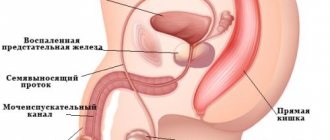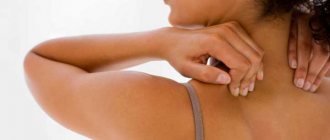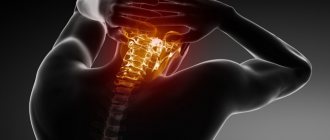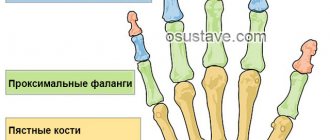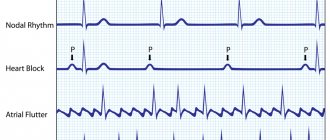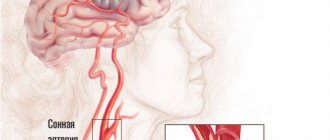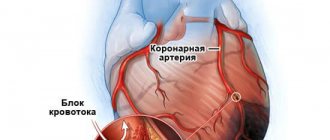Causes of pain
To better understand the overall picture, it is necessary to remember that the hearing organs consist of three main sections: internal, middle and external. When your ear hurts, it is necessary to consider the problem comprehensively; consult a doctor to clarify the nature of the disease, its etiology and physiology. The main diseases causing ear pain are given below.
- Otitis media is a disease accompanied by inflammation and, in some cases, purulent discharge. Otitis, depending on the inflamed part of the ear, is divided into internal, purulent, medium, external, acute, bacterial and others. Acute otitis media is accompanied by the appearance of boils, fever, redness and itching. The patient may experience shooting or nagging pain, as well as yellowish discharge. Internal otitis occurs when the middle is neglected, accompanied by loss of balance, nausea, and vomiting.
- Periochondritis is an infectious disease that occurs due to various bacteria entering the tissue of the auditory cartilage. Medical statistics say that in most cases the disease manifests itself against the background of influenza or pneumonia. In this case, severe pain is felt in the ear, and discharge is possible.
- Mastoiditis - occurs as a complication of acute otitis media. The disease affects the mastoid process, with a sharp rise in body temperature, pain in the ear, and redness. Mastoiditis may not have a negative effect on bone tissue (typical) and vice versa (atypical).
- Lymphadenitis is a deviation from the normal functioning of the lymph nodes, causing ear pain, headaches and similar symptoms.
Other reasons
The professional environment of swimmers (constant contact with water, wax is washed away, tissues soften - the hearing organs are more susceptible to bacterial attack), excessive release of earwax, deformations and damage, sonic booms and barotrauma. Phantom ear pain can cause oral ailments, damage to the cervical nerves, head injuries, and ulcers.
What to do for ear pain: first aid
The best decision is to go to an otolaryngologist, undergo an examination and receive prescriptions/recommendations. But it is not always possible to immediately get to a medical facility, so it will not be superfluous to know the rules of first aid.
Take painkillers
This is the easiest way to solve the problem, but for some reason people forget about this and immediately start using ear drops. Meanwhile, a Paracetamol or Ibuprofen tablet can relieve ear pain (or significantly reduce its intensity). Moreover, the latter drug is preferable - Ibuprofen has a pronounced anti-inflammatory effect, which will provide quick relief from pain.
Put drops in your nose
An excellent first aid option for ear pain is to drip a drug with a vasoconstrictor effect into the nose. This procedure will almost immediately relieve ear pain if it occurs due to a runny nose. Vasoconstrictor nasal drops include Naphthyzin, Galazolin.
Place drops in the sore ear
This decision is controversial! In no case should ear drops be used in case of a perforation (rupture) of the eardrum, therefore even the most effective ear drops cannot be used in case of pain without knowing the cause.
It is worth being careful and, for example, if a child complains of ear pain due to a cold, then he can be given Otipax, Otinum. But if the child swam in a pond the day before, then ear drops can no longer be used without prior consultation with an otolaryngologist. You should also not use ear drops to relieve pain in case of ear or head injury.
Dry heat
Local application of dry heat will be advisable for acute ear pain. You can warm the ear during the first 2-3 hours of pain, but then the same procedure becomes impractical and even dangerous in some cases. For example, if there is purulent inflammation of the ear canal, then thermal procedures will only worsen the situation.
The term “dry heat” refers to salt or sand heated in a frying pan, or a blue light lamp.
If we combine all the above recommendations, we can identify an algorithm for a person’s actions for ear pain:
if the pain has just appeared, and another 2-3 hours have not passed since its onset, then apply a heating pad or any dry heat to the sore ear;
- You should immediately take any painkiller, but priority is Ibuprofen;
- if there is a runny nose, then it is worth putting vasoconstrictor drops into the nose;
- if you are sure of the diagnosis (for example, you have a history of chronic otitis media and the period of its exacerbation has simply come), then you can drip painkillers/anti-inflammatory drops into the ear.
Please note: in any case, even if the ear pain has disappeared after the steps taken, you must seek qualified medical help! Pain is not a pathology, it is only a symptom of its presence - you need to diagnose the disease and carry out a competent course of therapy.
Ear pain is always a symptom of some disorder/pathology (with rare exceptions). Therefore, hoping that everything will go away on its own, dripping vegetable oil or some herbal tinctures into the ear will be at least unreasonable, and at most dangerous. Yes, first aid can and should be provided - ear pain is very intense, debilitating and requires immediate intervention. But the final verdict on the cause of the syndrome in question and on methods for solving the problem must be made by an otolaryngologist.
Tsygankova Yana Aleksandrovna, medical observer, therapist of the highest qualification category
21, total, today
( 199 votes, average: 4.57 out of 5)
Chronic purulent otitis media: course, treatment
Eustachitis (tubo-otitis): symptoms and treatment
Related Posts
Self help
Ear pain accompanied by fever cannot be treated with compresses. Drink a pain reliever, wipe (gently) your ear with alcohol or calendula (peroxide, warm water). Do not self-medicate; if you have boils, do not squeeze them out, do not remove foreign objects yourself if they get into the ear canal, do not use drops without additional consultation. In addition, if you notice discharge, do not warm your ears, do not apply ointment, just numb yourself and go to the doctor.
How to treat and what can be done to relieve pain at home?
If ear pain or other symptoms occur, consult a specialist. If not treated in a timely manner, a common malaise can lead to the development of complications - chronic otitis media, neuritis, deafness.
At the appointment, the doctor examines the patient and determines the cause of the complaints. Next, treatment is prescribed. Making a diagnosis is very important because... For each disease there are a number of indications and contraindications for the use of drugs and treatment methods.
NSAIDs for ear pain
The first measure for pain inside the ear is to take a pain reliever (so-called non-steroidal anti-inflammatory drugs). The choice of tablets depends on the individual characteristics of the patient (presence of kidney and liver diseases, tendency to bleeding, exacerbation of gastritis and stomach ulcers ) and the severity of the pain.
Effective anti-inflammatory drugs:
- Moment. Tablets are taken up to 4 times a day for pain. The maximum duration of treatment is up to 7 days. To have a gentle effect on the gastric mucosa, it is recommended to drink the drug after meals and wash it down with a sufficient amount of water. For liver and kidney diseases, daily medication intake should be reduced.
- Nurofen in various release forms. The medicine is also taken up to 4 times a day. For stomach diseases, preference should be given to the Nurofen Express capsule form. If the pain is severe, the drugs “ Nurofen Forte ” and “ Nurofen Express Forte ” with a higher dosage and a liquid center for quick pain relief are suitable.
- Sedalgin plus and Next.
Treatment
After the necessary examination or hardware examination - otoscopy, appropriate treatment is prescribed. Almost any ailment of the hearing organs can be treated with medication, and then with physiotherapeutic procedures.
Drug treatment includes taking antibiotics, using ear drops, boric alcohol, camphor oil and peroxide. Antibiotics are prescribed for inflammatory processes in the middle and inner ear. Some products that have an antibacterial effect are available in the form of sprays. The main representatives of antibiotics: Spiramycin, Cefazolin, Fugentin. Ear drops have an antibacterial and analgesic effect. When instilling, control the temperature of the medicine (if necessary, place the bottle with drops in warm water). If the inside of the ear hurts, you can use cotton pads with drops applied to them. Representatives of this series: Otinum, Otofa, Otipax. Among other things, doctors recommend carrying out cleansing procedures using peroxide; it is possible to use compresses (if there is no fever).
It is advisable to make compresses from oil, since alcohol can leave chemical burns. To make a compress you will need: fold the gauze several times, make a hole in it for the ear, put a bandage soaked in oil on the ear, cover with polyethylene, place cotton wool in the ear canal, wrap everything with a piece of cloth or a scarf.
How to treat otitis media with medications
To treat external otitis, doctors prescribe the insertion of turundas, previously moistened with an alcohol or antibacterial solution. If the inflammation is severe, before inserting the turunda, the ear cavity is disinfected with solutions of boric acid and furatsilin (they are not used to treat a child - the products are unsafe for delicate skin and cause damage to the membrane). For otitis, doctors almost always prescribe antibiotics - if the disease is neglected, it will lead to melting of the bone tissue of the ear. In cases of damage to the bones of the auditory organ, they are replaced with artificial analogues.
For otitis media, otolaryngologists prescribe compresses that warm the ear canal. An alcohol solution, anti-inflammatory drugs, and camphor are instilled directly into the ear. Warming turundas are an important element for the treatment of otitis media. The effectiveness of their use largely depends on the correct application. If you take the wrong piece of cotton wool, it will fall out of the ear and will not provide a warming effect. To properly lay the turunda you need:
- Twist a piece of bandage into a spiral and moisten it in a liquid used to treat otitis media.
- Before placing the turunda, drop a little medicine into the ear.
- Place a rolled bandage near the eardrum.
Treatment of children
Children suffer more severely from various hearing diseases. If a child’s ear hurts, vasodilator drops should be prescribed. For children under two years of age, there is a special range of medications, these are light-spectrum antibiotics: Ceftriaxone, Amoxiclav. Infants require hospital treatment; as soon as you notice unnatural head movements and crying, the baby is suffering from ear pain. Treatment for children may include taking medications containing paracetamol to reduce fever.
Health procedures for children, even in the presence of pain, should not include any drugs containing boric acid and chloramphenicol.
Disease formation and elimination
Using antihistamines and soothing ointments can relieve burning and itching in the ear area. If pain occurs and the ear is constantly bothering you, then non-steroidal anti-inflammatory drugs are prescribed. Which have an analgesic effect and relieve the inflammatory process well.
To relieve swelling, a vasoconstrictor is prescribed. If there is suppuration, the doctor prescribes disinfectant medications, and also uses boric acid in powder, which dries well and eliminates the infection.
Often, in additional methods, doctors prescribe a procedure such as physiotherapy. Due to it, the effect of drugs is improved, and all processes are accelerated and a rapid recovery occurs. To identify the fluid that is in the eardrum, a specialist pierces the membranes using special equipment. To remove wax plug from the ear, first of all you need to see a doctor who, after examining the ear, will carry out a hygienic procedure and remove wax from the ear.
Remove sulfur using special tweezers, and also rinse with hydrogen peroxide or saline solution. During colds, to eliminate all uncomfortable sensations in the ears and to avoid the spread of infectious processes, you need to intensively treat the cause of the disease and listen to all the recommendations of a specialist. If the cause of the symptom is a pressure disorder in the hearing aid, then normalization of its indicator is necessary. And after this it is necessary to establish what factors influenced the pressure surge. After diagnosis, the cause of the disease is determined and complex therapeutic measures are prescribed.
The pathological process that has formed in the hearing aid can occur with painful sensations, which are constant and intense; the ear constantly bothers the patient. Patients usually complain of a feeling of heaviness in the organ of hearing, a painful sensation that shoots and a feeling of fullness in it. If a constantly unpleasant sensation occurs, then it is necessary to accurately establish their cause, since sometimes these symptoms are due to the fact that a severe tumor process is occurring in the ear . In this case, urgent surgical intervention is necessary.
Often the cause is tooth or gum disease. This diagnosis is confirmed by such a factor as the fact that when tapping on diseased teeth, the pathology in the organ of hearing intensifies, pain and a feeling of discomfort begin. There is a pulsation, the ear begins to hurt. In this case, the help of a dentist is needed to treat the diseased teeth; the ear is not touched, because the cause is not in it. Dental treatment is done to eliminate the feeling of discomfort. In any case, specialist consultation is necessary, as well as timely and correct treatment.
ethnoscience
Traditional healers recommend using some recipes.
- Decoction of bay leaves. Pour 5-6 sheets of 200 grams of boiling water, leave to infuse for several hours, then instill 5-6 drops and take 40 grams orally. The course of treatment is three days.
- When your ear hurts badly, drops of almond oil will help relieve the condition. A swab or cotton wool is moistened with oil and placed in the ear, or 3-4 drops in each ear canal.
- To relieve unpleasant symptoms, soak cotton wool in glycerin, then in a decoction of mint and wormwood, and place it in the ear for 2 hours.
Not all methods are proven; before starting procedures, consult an otolaryngologist.
Examinations and diagnosis of ear pain
The doctor will first talk with you to take a medical history (anamnesis). He is asking:
- Duration, strength and course of complaints
- Type of ear pain
- previous or current infections
- previous treatments (including use of home remedies)
- possible underlying medical conditions (eg diabetes mellitus, skin diseases, HIV) or recent accidents
Also tell your doctor about possible pool visits and diving holidays - they may have something to do with your ear pain.
An anamnestic conversation can give the doctor the first indications of the cause of ear pain. examinations , if necessary :
The doctor looks in the mouth and throat and feels the lymph nodes in the neck. In addition, he performs ear mirroring (otoscopy): the doctor uses a small, lighted magnifying glass to take a closer look at the external auditory canal and eardrum. If, for example, a middle ear infection causes pain, the eardrum is red or swollen with fluid in the middle ear. A foreign body or earwax plug may also be found during an otoscopy.
tube function test can be used to check whether the Eustachian tube is continuous. This connecting channel ensures equalization of pressure between the middle ear and the nasopharynx. The test can be performed, for example, using the Valsalva maneuver. The doctor asks the patient to breathe deeply with the mouth closed and the nose closed. Often the previously “fallen” ear tube opens again.
In some cases, additional diagnostic tests may be needed to investigate ear pain. If your doctor suspects a cause of pain, such as a problem with the jaw joint or changes in the bony ear canal or mastoid process, he may order an X-ray or computed tomography (CT) scan.
Hearing tests are also often performed . They can help narrow down the cause of discomfort, since various disorders in sound conduction or sound processing often have typical resonant and frequency patterns.
Blood tests and analysis of ear canal discharge can show whether ear pain is caused by inflammation or infection.
If these tests do not provide a satisfactory diagnosis, referral to another specialist (such as a dentist) may help obtain the desired result.
Drug treatment
Below we will look at a list of medications that doctors speak about most positively.
Otipax
Otipax is an excellent pain reliever. It contains lidocaine, so it has a fairly quick effect. Contraindicated in case of injury to the eardrum, otherwise it may worsen the infection.
Otinum
Otinum has a local anesthetic effect, fights ear inflammation well and relieves itching. This drug is prescribed for external and otitis media, as well as to soften the wax plug in the ear.
Otofa
Otofa is a local drug with an analgesic effect. Contraindicated for colds and sore throat.
Miramistin
Miramistin has excellent healing and bactericidal properties, has a gentle effect on the eardrum without disturbing the integrity of healthy cells.
Normax
Normax - drops with antibiotics, effectively fight bacteria and ear infections, help with chronic forms of otitis media. Contraindicated for pregnant and lactating women.
Tsipromed
Tsipromed is an antibiotic that kills all pathogenic infections and bacteria in the ear. Young children should not use them.
For pregnant women, the doctor may prescribe Otipax or compresses with boric alcohol.
Painful pathologies of organs
Often pain in the ear area occurs due to various pathologies of nearby internal organs. Pulling or spasmodic sensations can spread to the area of the lower jaw, neck, temple, and extend to the back of the head, forehead or crown. Such diseases include arthrosis or arthritis of the temporomandibular joint, mastoiditis, and mumps.
Brief description of diseases:
- Arthrosis of the temporomandibular joint. It is characterized by damage to the articular cartilage and unpleasant sensations in the lower jaw area when chewing. The illness lasts a long time and can bother you all day or during meals. Diagnosis is carried out by radiography, treatment is carried out with medications.
- Arthritis of the temporomandibular joint. The inflammatory disease resembles otitis media or arthrosis, and is characterized by decreased hearing and morning stiffness of the lower jaw. When opening the mouth, a crunching or clicking sound is heard. The disease is characterized by symptoms such as fever, suppuration, and redness of the skin on the lower half of the face. Intense headaches at the temple, swelling, and swelling occur. Treatment is with antibacterial drugs that relieve inflammation.
- Mastoiditis. It occurs due to the entry of pathogenic microorganisms into the bony protrusion located behind the auricle. The main symptom of inflammation is throbbing headaches near the ear, neck or temple. Treatment is prescribed by an ENT doctor based on complaints and a thorough examination of the patient.
- Mumps. Caused by streptococci, staphylococci, and occurs due to inflammation of the salivary gland. Acute painful sensations near the ear are accompanied by fever and weakness. Treatment is performed by the surgeon using antibiotic therapy.
Headaches and earaches are also caused by diseases such as mumps, laryngeal tumors, pharyngitis, purulent abscess in the neck or temple area, tonsillitis, and sinusitis. In all cases, the patient experiences headaches and discomfort in the ears.
Causes of the disease
The most common and common cause of discomfort and pain in the area of the auricle is the development of a disease such as otitis media. In severe cases of this disease, the inflammatory process can even spread to the ear cartilage. Typically, pathology appears against the background of the introduction of various infectious agents into the inner or other part of the ear. However, in some cases, inflammation can develop as a result of mechanical trauma in the area of the hearing organs and severe hypothermia. Otitis media is quite easy to treat, but only if it is started in a timely manner.
Often the cause of ear pain is the entry of foreign objects into the internal auditory canal. This phenomenon is often observed in young children. In this case, the affected ear can not only cause pain, but also become very swollen. Sometimes a stuck foreign body cannot be pulled out without surgical intervention.
Inappropriate hygienic care of the hearing organs can also be a factor that provokes the occurrence of pain. For example, excessive wax content in the ear, which appears if they are not washed or cleaned regularly. A large amount of sulfur, in addition to causing discomfort, can form sulfur plugs that disrupt sound perception.
A person will not be able to remove such plugs on his own by ordinary cleaning, since they have a compressed structure and with simple cleaning they become even more compacted. Their removal is carried out using a special syringe into which an antiseptic solution is pumped and its contents are injected under pressure into the ear canal. To avoid the formation of wax plugs, you should maintain hearing hygiene.
Why does my ear hurt on one side?
How to lower blood pressure at home quickly. First aid for high blood pressure
Eye pain when blinking or pressing - possible causes, prevention and help
Pain in the eyes when moving the eyeball - causes and treatment
Why does my head hurt in the forehead and put pressure on my eyes?
Eye headache
In the article we discuss the reasons why the ear hurts on one side, we talk about what diseases cause both headache and ear pain. You will find out what therapy is prescribed for otitis media, and whether it can be treated at home.
Internal otitis
The most serious type of disease. It can lead to complete hearing loss. Doctors call this disease labyrinthitis. Because the cochlea itself or the semicircular canals are affected. Symptoms are related to the internal structure. After all, this is where the auditory receptors and the vestibular apparatus – the organ of balance – are located.
The leading symptoms are noise and pain in the ears, severe dizziness, and hearing loss. They appear 1-2 weeks after a bacterial infection. During this time, pathogenic microorganisms manage to get through the bloodstream directly into the organ of hearing, where they provoke the development of otitis media.
Inflammation of the inner ear has the following symptoms:
- Loss of sense of balance, somewhat unsteady gait.
- Sudden attacks of dizziness, accompanied by nausea and vomiting.
- Eyeballs twitch.
- Fever.
- With a purulent disease, complete hearing loss and persistent imbalance are observed.
If such inflammation of the ears is suspected, what to treat is determined only after additional diagnostic methods. After examination, the ENT doctor will refer you for a computed tomography or magnetic resonance imaging scan. Quite often, patients diagnosed with internal ear inflammation need to be hospitalized.
Methods for determining the cause of ear pain
Otalgia accompanies many diseases. The following diagnostic methods help to identify the cause of the syndrome:
| Disease | Diagnostic methods |
| Otitis, eustachitis |
|
| Mastoiditis |
|
| Contusion, foreign body penetration, perforation of the eardrum |
|
| Arthritis or arthrosis of the temporomandibular joint |
|
| Barotrauma | Otoscopy |
| Pulpitis | X-ray of a tooth |
Treatment of otitis media in children
Uncomplicated ear infections in children go away quite quickly. As a rule, the pediatrician does not prescribe antibiotics. If you consult a doctor in a timely manner, long and complex courses of therapy will not cause ear inflammation. Treatment includes only antipyretic and painkillers. Improvement is observed within a day. If treatment does not bring the long-awaited relief, the pediatrician uses an antibiotic.
You should not choose ear drops yourself. Follow your doctor's advice strictly. Unfortunately, drops used without prescription can greatly harm the baby.
During illness, a child's appetite may worsen. He should not be forced to eat. With the disappearance of the pain syndrome, the previous appetite will return. It is very important to give your baby plenty of fluids, especially if there is a fever.
If you have frequent otitis, it makes sense to discuss your child’s vaccination with your pediatrician. For most countries, vaccination against otitis media is mandatory. It will protect the baby from exposure to bacteria that most often cause otitis media.
Causes and symptoms of otitis in children
Often, middle ear inflammation is diagnosed in babies during the first two years of life. The causes may be frequent respiratory tract infections, allergies, tonsil hypertrophy. The disease is provoked by going to a nursery or smoking in the presence of a child. Sometimes even prolonged pacifier sucking can lead to otitis media.
Initially, a runny nose occurs that lasts for 2-3 days, cough, and sometimes fever. Usually parents don’t even think that this is the beginning of an ear infection in their child. The baby has a fever, cries irritably, and sleeps very poorly. Then he begins to rub his head on the pillow and pulls his pen towards his sore ear. The baby refuses to eat, because the sucking process causes increased pain. In infants, middle ear inflammation can cause quite different symptoms. Sometimes abdominal pain and diarrhea are observed.
A visit to the doctor is required. During the examination, you need to hold the child very tightly. The procedure is not the most pleasant, but it only lasts a few seconds. Remember, any head jerking causes additional pain to the baby.
Diagnosis of the disease
It should not be forgotten that diseases of the throat, nose and ears are closely interrelated. Sometimes otitis media can be triggered by various factors, such as periodontitis and laryngitis. If there is a suspicion of ear inflammation, the symptoms of which are described above, then only an ENT doctor can correctly diagnose the disease.
The otolaryngologist will conduct an examination using special instruments, evaluate the symptoms and, if necessary, prescribe an examination. Most often, a general blood test is recommended. It identifies signs of inflammation.
Very often, inflammation of the middle ear is accompanied by a temporary deterioration in hearing. The doctor will check the extent of the damage. For this purpose, audiometry is performed. Sound waves penetrate the hearing organ through air and bone. The latter is checked with a tuning fork. To test air conduction, a special device is used - an audiograph. The patient wearing headphones must press the signal button as soon as he hears the sound. At this time, the doctor uses an audiograph, gradually increasing the sound, to record the patient’s level of perception.
Ear pain: treatment with medication
The sooner you start treatment, the faster you will get rid of unpleasant symptoms and prevent the risk of complications. Of course, it is not recommended to prescribe medications on your own. Take any medications strictly as prescribed by your doctor. Before you begin full treatment, you need to eliminate the discomfort. A pain reliever may be prescribed for this. For ear pain (moderate), paracetamol is prescribed. For additional effects, you can use Otipax drops or their analogues. If you have a feeling of stuffiness in your ears and your hearing has deteriorated, pay attention to the condition of your nose. Using Naphthyzin, Nazivin or other drops to relieve congestion, you will immediately feel relief. If severe ear pain is accompanied by fever and purulent discharge, then most likely you will have to undergo a course of antibiotic treatment. But before this, the otolaryngologist must conduct a thorough examination and carry out all the necessary procedures aimed at cleansing and disinfecting the ear canal. The choice of drugs should be approached with special responsibility, because they have a lot of side effects. Amoxicillin is considered the safest antibiotic.
The course of treatment for ear pain lasts on average 10 days. During this time, it is important not only to take medications on time, but also to monitor the general condition of the body.
Main reasons
Ear inflammation is accompanied by severe pain. This symptom can bother both children and adults. It is caused by the following reasons:
- otitis and inflammatory diseases of neighboring organs;
- damage to the auditory nerve or the entire system;
- pathologies of the neck, ENT organs, brain, blood vessels;
- tumors.
With various pathologies, pain has its own character. It can be shooting, cutting, pulsating, stabbing, pressing. Most often, the disease also has other symptoms. They all need to be clearly formulated by the doctor at the appointment. Only then will the doctor be able to make the correct diagnosis and select effective treatment.
Treatment of otitis externa
The question becomes relevant if ear inflammation occurs: “How to treat this disease?” As a rule, it is recommended to introduce turundas moistened with a solution of boric acid or alcohol. The procedure speeds up recovery. But it causes severe discomfort to the patient, becoming a rather unpleasant experience. In this regard, the otolaryngologist recommends the following therapeutic course:
- The sore ear must be instilled with boric alcohol. For analgesic and anti-inflammatory effects, the drugs Otipax or Otirelax are prescribed. If the discomfort is quite strong, it is recommended to take a tablet of Ibuprofen or Ketonal.
- If necessary, antibacterial drops “Ofloxacin” and “Neomycin” are included in the course of therapy. Patients with reduced immunity are prescribed a course of antibiotics.
- Turundas with antibacterial ointments - “Lincomycin”, “Tetracycline” - are placed in the ear cavity.
Otitis media
This disease is very common in children. Inflammation of the middle ear has many causes. One of the main ones is a complication after a cold. The disease is especially common in children with weakened immune systems. Sometimes childhood infections - measles, scarlet fever - can cause complications. In this case, the infection enters the ear through the bloodstream, causing an inflammatory process.
Otitis media is accompanied by severe pain. They intensify significantly when swallowing and chewing. Most often, it is for this reason that the patient completely refuses to eat. Such patients, in order to somewhat calm the pain, lie on their side, pressing the damaged ear to the pillow. This syndrome is especially pronounced in children.
It is not difficult to identify inflammation of the middle ear. The symptoms of this disease are quite pronounced:
- Severe pain continues for quite a long time. In the absence of the necessary treatment, the disease becomes chronic, causing very serious complications.
- Fever, general malaise, weakness.
- Unpleasant sensations - ringing, congestion, tinnitus.
- Temporary hearing loss occurs. If the eardrum is destroyed by infection, deafness may develop.
At the first sensation of pain, be sure to visit an otolaryngologist. Only a doctor can diagnose otitis media. Treatment includes the prescription of antibacterial medications and the use of drops.
Prevention of otitis
The most important measure is timely treatment of infections in accordance with the doctor’s prescription. This is very important for children, since immature immunity is not able to provide a full level of protection. As a result, children may suffer from chronic otitis media.
Basic preventive measures:
- Boosting immunity. According to statistics, ear diseases in most cases occur after suffering from flu or colds.
- Maintaining hygiene rules. It is no secret that any infection is transmitted by airborne droplets. Sometimes through a handshake. Children can “catch” the infection through toys. Basic observance of the rules of hygiene and cleanliness in the house (especially in the children's room) can protect against many diseases.
- No smoking. It is very important to heed this warning. You cannot smoke in front of your child. Especially if the baby is often diagnosed with otitis media. After all, a passive child smoker gets an additional chance of middle ear infection.
- Vaccination. As already noted, if the need arises, this issue should be discussed with your doctor. Today, a new vaccine, Prevnar 13, is used quite successfully to prevent ear diseases. Immunization similar to proven old methods is recommended. In infancy, vaccinations are given at 2, 4, 6, 12 and 15 months.
If your child has ear pain
It is very easy for a small child to get sick. They often do not listen to their parents, play on the street without a hat, and as a result, in the future they may complain of severe ear pain. How to cure a sick child's ear? Of course, it is best for a doctor to deal with such a problem, but if the pain occurs suddenly, you need to try to cope with it yourself.
First of all, apply a warm compress to your ear and try to warm it up. To do this, soak a small piece of gauze in honey and alcohol and apply it to the area around the ear, it is important that the ear canal remains open. Most often, this problem occurs with a cold. If the cause of the disease is a draft or ingress of liquid, the child, in addition to ear pain, will complain of discomfort in the throat. How to treat the child in this case?
The safest and most proven remedy is camphor oil. You only need two drops of this product. If you have lemon balm at home, you can use it. You need to brew one sprig of the plant in a glass of boiling water, cool, strain and rinse the ear twice a day. Additionally, you can brew lemon balm as a drink, this will have a beneficial effect on the treatment process.
Treatment of otitis media
A serious illness that often requires bed rest. Acute ear inflammation in adults is most often accompanied by intoxication and high fever. At this stage of the disease, it is recommended to switch to a lighter diet. However, the diet must include all the necessary vitamins and nutrients.
The course of therapy depends entirely on the degree of inflammation of the middle ear. Treatment at the initial stage includes the following measures:
- Antipyretic and painkillers are prescribed: Ibuprofen, Paracetamol, Aspirin, Diclofenac, Analgin.
- A course of antibiotics is being administered. Diagnostics are often prescribed to identify the causative agent of the disease. If a smear from the ear cavity has not been examined, then it is recommended to take the antibacterial drugs Amoxicillin, Cefuroxime, Augmentin, and Spiramycin. This course is prescribed for 10 days.
- For otitis accompanied by severe swelling of the eardrum, antihistamines are added to the course of therapy: Claritin, Suprastin, etc.
- Be sure to include vasoconstrictor nasal drops in the treatment: “Naphthyzin”, “Sanorin”, “Dlyanos”. Protargol nasal disinfectant is also recommended.
- To relieve pain, boric alcohol should be instilled into the ear. Anesthetics in combination with antibiotics are suitable - chloramphenicol with lidocaine, Phenazone.
- Physiotherapy is included in the course of treatment. UHF heating, laser treatment, and microcurrents are widely used. Alcohol warming compresses are recommended.
Throughout the treatment, it is necessary to regularly and promptly remove the escaping purulent masses after treatment with hydrogen peroxide. It is important to remember: if inflammation does not decrease by the fifth day, you should consult a doctor.
